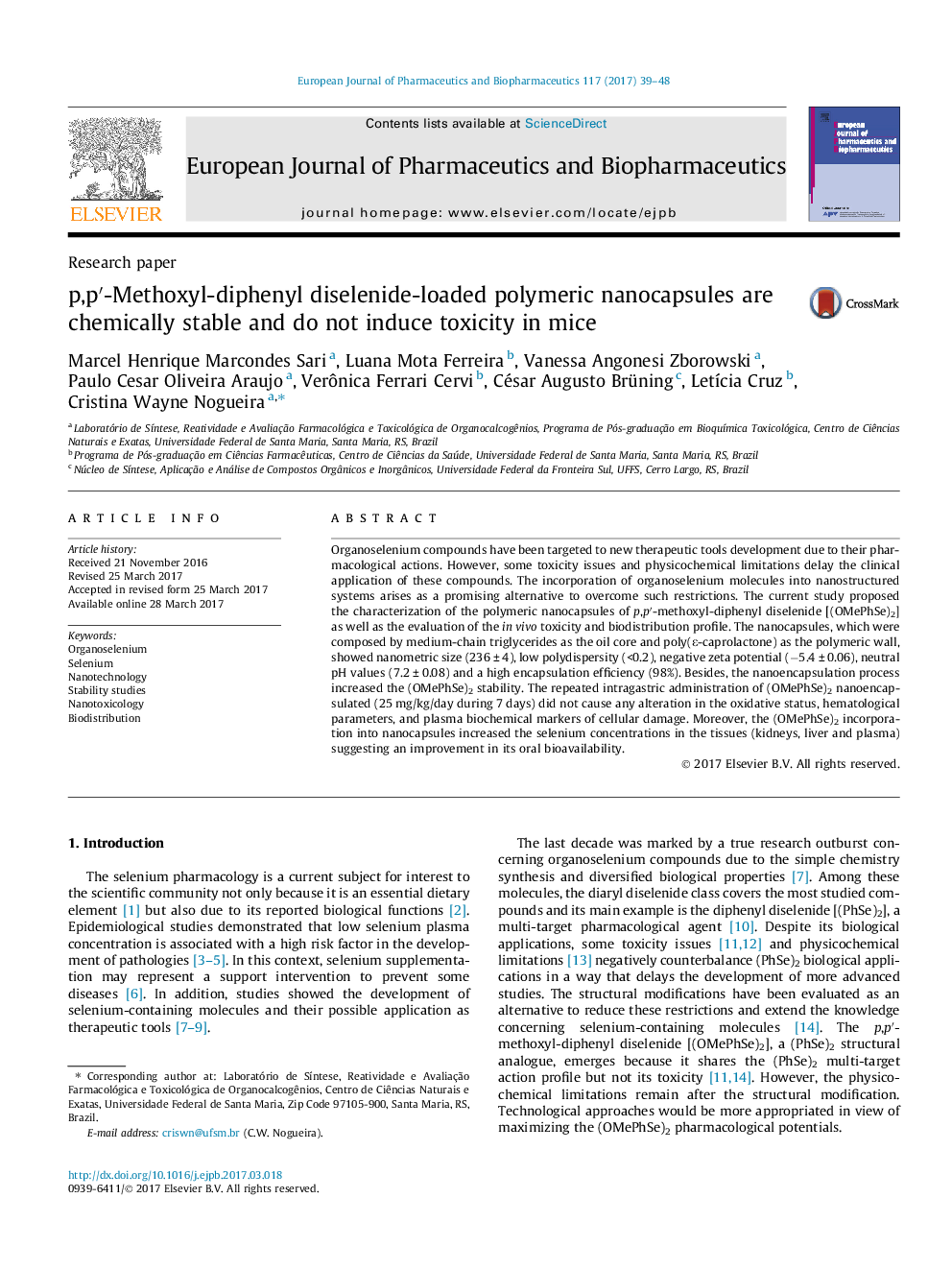| Article ID | Journal | Published Year | Pages | File Type |
|---|---|---|---|---|
| 5521494 | European Journal of Pharmaceutics and Biopharmaceutics | 2017 | 10 Pages |
â¢(OMePhSe)2 polymeric nanocapsules were physicochemically characterized.â¢The nanocapsules increased the (OMePhSe)2 stability.â¢(OMePhSe)2 nanocapsules showed no hemolytical effect in vitro and in vivo toxicity.â¢(OMePhSe)2 had wide tissue distribution that was improved by nanocapsules.
Organoselenium compounds have been targeted to new therapeutic tools development due to their pharmacological actions. However, some toxicity issues and physicochemical limitations delay the clinical application of these compounds. The incorporation of organoselenium molecules into nanostructured systems arises as a promising alternative to overcome such restrictions. The current study proposed the characterization of the polymeric nanocapsules of p,pâ²-methoxyl-diphenyl diselenide [(OMePhSe)2] as well as the evaluation of the in vivo toxicity and biodistribution profile. The nanocapsules, which were composed by medium-chain triglycerides as the oil core and poly(ε-caprolactone) as the polymeric wall, showed nanometric size (236 ± 4), low polydispersity (<0.2), negative zeta potential (â5.4 ± 0.06), neutral pH values (7.2 ± 0.08) and a high encapsulation efficiency (98%). Besides, the nanoencapsulation process increased the (OMePhSe)2 stability. The repeated intragastric administration of (OMePhSe)2 nanoencapsulated (25 mg/kg/day during 7 days) did not cause any alteration in the oxidative status, hematological parameters, and plasma biochemical markers of cellular damage. Moreover, the (OMePhSe)2 incorporation into nanocapsules increased the selenium concentrations in the tissues (kidneys, liver and plasma) suggesting an improvement in its oral bioavailability.
Graphical abstractDownload high-res image (125KB)Download full-size image
